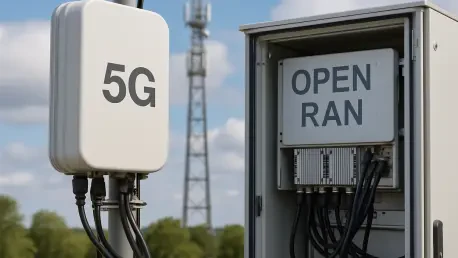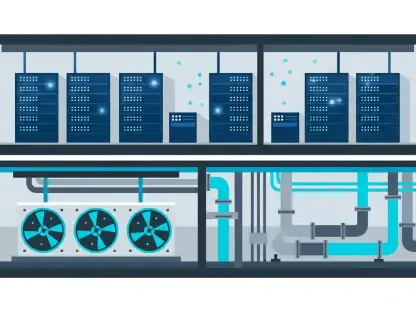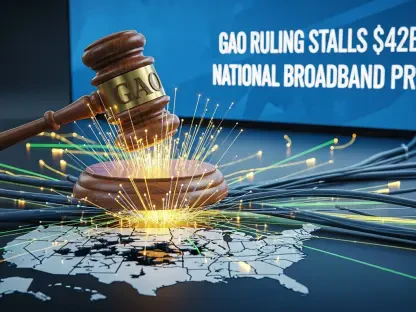The German telecommunications landscape has witnessed a significant shift with the emergence of 1&1 as a formidable player in the 5G era. Within just 18 months since its 5G services debut, 1&1 achieved a remarkable milestone by amassing over 10 million users, establishing itself as a trailblazer in rapid network expansion across Europe. The backbone of this growth is a cutting-edge Open RAN (Radio Access Network) architecture, allowing 1&1 to effectively transition a large pool of users from competitors such as Telefónica and Vodafone through previously established wholesale agreements. This pioneering endeavor marks Germany’s largest mobile network migration, characterized by a decentralized network model powered by advanced cloud-native technology. With 279 of the planned 500 local data centers already operational, 1&1 ensures low-latency and high-performance connectivity across the nation.
Decentralized Infrastructure Approach
Bolstering Network Capabilities with Cloud Native Operations
At the core of 1&1’s technological leap is its reliance on a decentralized network supported by a robust cloud-native infrastructure. This innovative approach has become pivotal in enabling seamless network migration and improved user experience. The operational core and edge data centers, strategically distributed across Germany, facilitate not only fast connectivity but also energy efficiency. Operating over 279 active local data centers, with plans to broaden to 500, provides the framework for enhanced throughput and reduced delays, crucial for applications demanding high speeds and low latency.
Moreover, the cloud-based model empowers 1&1 to exercise greater control over its network, minimizing dependence on specific vendor-provided solutions. This digital sovereignty is achieved without compromising performance, positioning the company advantageously in an increasingly competitive telecom market. By harnessing Open RAN technology, 1&1 capitalizes on open interfaces and standardized technologies to conduct regular audits, reinforcing both security and operational transparency.
Expanding Network Reach and User Transition
Through a meticulously planned expansion strategy, 1&1 has steadily increased its network footprint. By collaborating with a diverse portfolio of partners exceeding 80 in number, 1&1 employs hardware, software, and services to facilitate the transition of up to 50,000 users daily. Such strategic alliances are instrumental in realizing the company’s vision of rolling out 5G services to cover a quarter of Germany’s households by the current year and aiming to reach half by 2030.
This aggressive user migration strategy not only accelerates 1&1’s growth trajectory but also mitigates conventional network expansion challenges. The use of Open RAN technology eliminates the need for legacy infrastructure constraints, streamlining the integration of new components into the network ecosystem. The focus on operational efficiency and scalability results in a system capable of accommodating the increasing demand for high-speed connectivity, establishing 1&1 as a leading force in the 5G sector.
Strategic Partnerships and Roaming Agreements
Enhancing Network Sustainability Through Roaming Partnerships
To complement its infrastructure ambitions, 1&1 has effectively leveraged strategic roaming agreements to ensure nationwide service continuity. A notable milestone in this endeavor is the long-term roaming agreement with Vodafone Germany, facilitating access to 5G services at a national scale. This partnership grants 1&1 access to Vodafone’s existing 2G, 4G, and 5G networks, particularly in areas where its infrastructure deployment is ongoing. By securing a five-year agreement with the potential to extend up to 18 years, 1&1 strengthens its service reliability, reducing potential service gaps during its expansion phases.
The agreement with Vodafone complements 1&1’s collaboration with Telefónica, slated to last until June 2025. These alliances emphasize the significance of cooperative strategies in accelerating 1&1’s market penetration and sustaining its competitive edge. Such partnerships enable 1&1 to deliver uninterrupted services to its vast user base, reinforcing user confidence and satisfaction while the company systematically builds and extends its network infrastructure.
Navigating Competitive Pressures in the Telecom Sector
Despite the challenges inherent in a fiercely competitive telecommunications industry, 1&1’s innovative approach positions the company to navigate these waters effectively. By harnessing the power of Open RAN technology, the company differentiates itself from traditional operators reliant on proprietary systems. Open RAN allows for a more adaptable and cost-effective delivery model, paving the way for disruptive advancements and further market penetration.
1&1’s strategic foresight in adopting energy-efficient methodologies has also yielded notable results. The company’s network operates with an energy saving of 10–30% compared to conventional networks, aligning with global sustainability goals. This commitment to eco-friendly practices not only caters to environmentally conscious consumers but also positions 1&1 as a forward-thinking leader in network sustainability.
Paving the Path for Future Expansion
Addressing Growth Potential and Future Expansion
1&1’s remarkable journey illustrates a blueprint for successful network deployment, leveraging technological innovations and strategic partnerships to fuel its rapid expansion. The company’s vision to secure a notable share of the German telecom market continues to unfold as it targets broader household coverage with its efficient 5G offerings. As more data centers become operational, the potential for new applications and services that thrive on high-speed, low-latency connectivity will likely increase, setting new industry standards.
By pioneering a decentralized, cloud-native network model, 1&1 serves as an example of how innovative approaches can reshape national telecommunications landscapes. The company’s success story underscores the importance of strategic thinking amid rapid technological advancements and ever-evolving consumer expectations. With a substantial user base and infrastructure in place, 1&1 is well poised to expand its influence beyond national borders, potentially ushering in a new era of telecommunications across Europe.
Technological Innovations Beyond Borders
At the heart of 1&1’s technological advancement is its reliance on a decentralized network, underpinned by a robust cloud-native infrastructure. This innovative setup is crucial for seamless network migration and an enhanced user experience. The strategic distribution of operational core and edge data centers across Germany ensures not just fast connectivity but also improved energy efficiency. With over 279 active local data centers and plans to expand to 500, 1&1 provides a framework that enhances throughput and reduces delays, essential for applications that require high speeds and low latency.
In addition, the cloud-based model gives 1&1 greater control over its network, reducing reliance on solutions from specific vendors. This digital sovereignty is achieved without sacrificing performance, which positions the company advantageously in a competitive telecom market. By adopting Open RAN technology, 1&1 leverages open interfaces and standardized technologies, enabling regular audits that strengthen both security and operational transparency, ensuring a robust network ecosystem.









